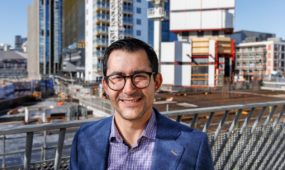'Most advanced hospital in modern world' opens
Health & Medical
One of the world’s most advanced hospitals has officially opened in South Australia.

Sign up to receive notifications about new stories in this category.
Thank you for subscribing to story notifications.
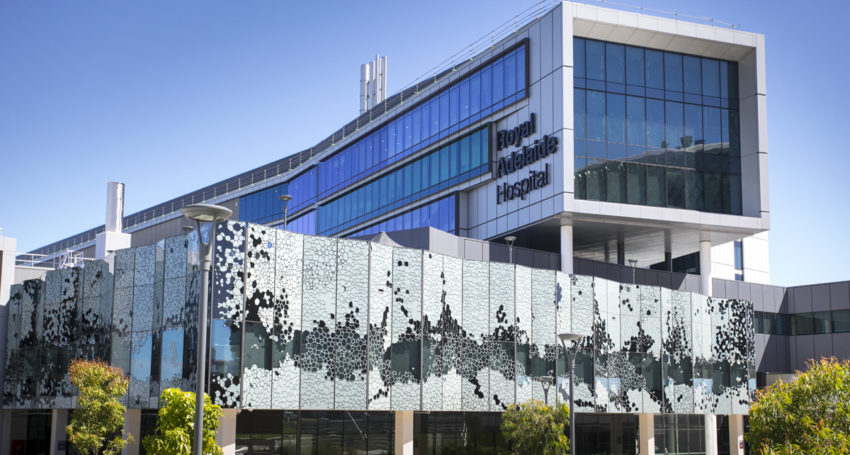
The AU$2.3 billion (€1.55 billion, USD$1.83 billion) new Royal Adelaide Hospital (RAH) includes 800 beds and will care for an estimated 85,000 inpatients and 400,000 outpatients each year.
The RAH, in the South Australian capital Adelaide, is set to be the epicentre of the state’s health system and is reportedly the third most expensive building in the world.
The hospital features all single patient rooms, each with its own personal ensuite and day bed to allow for a loved one to stay overnight. It has been treating some patients for the past few weeks but was officially launched with the opening of its Emergency Department this morning.
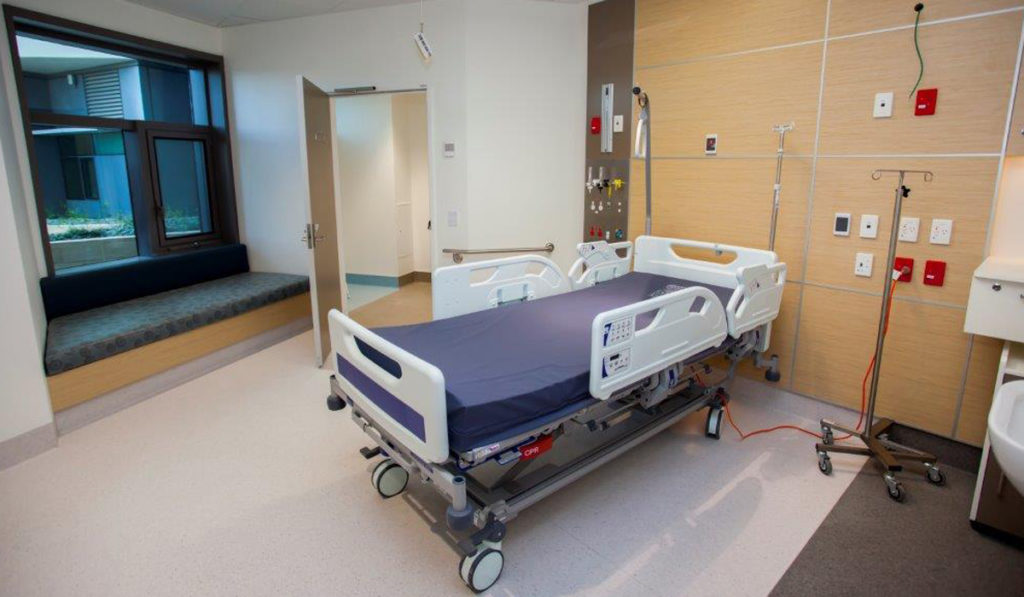
A patient room at the new Royal Adelaide Hospital.
This has coincided with the movement of hundreds of patients from the old hospital about 2km further up North Terrace.
South Australian Premier Jay Weatherill said this week represented an exciting time for the health professionals moving to the new hospital.
“Today, we are doing more than opening the world’s finest and most advanced hospital,” he said.
“We’re inaugurating an institution that will serve generations of families and underpin the wellbeing and progress of our state.”
Designed by Silver Thomas Hanley in joint venture with Design Inc and constructed by Hansen Yuncken Leighton Contractors as part of a PPP model, it has been touted as the most advanced hospital in the modern world.
Silver Thomas Hanley led the design for the new 180,000sq m hospital, 230,000sq m including car parking, following a brief based on a model of care aimed to rejuvenate and disrupt the way health services are delivered in South Australia.
“The Royal Adelaide is intended to be the jewel in the crown of that restructured statewide service,” Silver Thomas Hanley Managing Director Ernest Girardi said.
“We re-engineered the whole concept of how a hospital works right down to the bedrooms.”
Built in the northwestern corner of the Adelaide CBD overlooking the River Torrens and parklands, the hospital is part of the $3.6 billion Adelaide BioMed City.
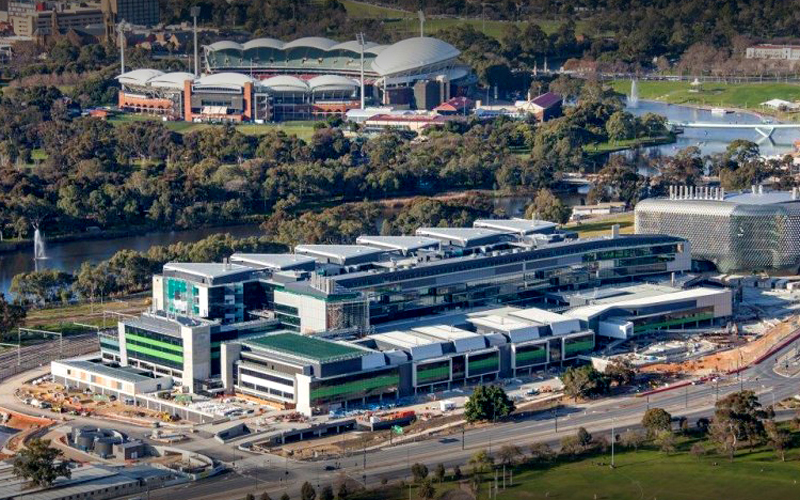
An aerial view of the new Royal Adelaide Hospital.
The 10-level hospital on a sloping 10-hectare site has its main entrance on Level 3. The narrow piece of land was once home to the city’s railyards. The design for the hospital was managed within the height restrictions posed by the flight path for the nearby Adelaide Airport.
The clinical and public components of the building are orientated towards the North Terrace or CBD side of the building while the residential and inpatient components overlook the River Torrens and parklands from six triangular accommodation towers.
The landscaped gardens and courtyards are located within two minutes of all 800 patient rooms, which also feature views of the surrounding parklands and windows that open.
Girardi said the design of the rooms were a good example of how the hospital’s concept had been re-engineered to provide a patient-focused facility.
“If you walk into many current hospital bedrooms they are what I call the motel solution with the ensuite on the left or the right before you walk into the sleeping area – often you can’t see the area where the patient is sleeping because the ensuite is in the way,” he said.
“What we did is we provided visibility both ways – from the corridor so the clinicians can look in without any obstruction and the patient can look out.
“It is a solution that is nothing like any other hospital bedroom in this country or the world for that matter.”
The hospital’s long and narrow shape has allowed it to be laid out vertically rather than laterally, in a series of vertical clinical villages, which are accessed by three strategically located banks of lifts across the spine of the building.
“For instance, all the cancer services are not located on the one floor – you might not think that’s a good idea – we’ve located them on top of each other at the eastern end of the building,” Girardi said.
“At the lower level we’ve got the radiotherapy bunkers where people have radiation treatment, on the next level we have the outpatient services for consultations or chemotherapy treatment and on the upper levels we have the overnight accommodation for the oncology patients.
“So clinical movement is generally up or down over two or three levels rather than lateral east to west along the hospital’s long spine.”
Similarly, at the western end of the hospital, the trauma modalities include the Emergency Department, Intensive Care Unit and operating theatres all stacked below the helipad and connected by a series of “hot lifts”.
The hospital’s technology includes a fleet of 25 Automated Guided Vehicles (AGVs) to transport food, linen, waste and stores; advanced tele-health facilities enabling staff to consult with colleagues and patients across the state, and; the biggest pneumatic tube system in an Australian hospital, designed to speed up diagnosis and treatment by rapidly delivering critical supplies like blood samples and medicine.
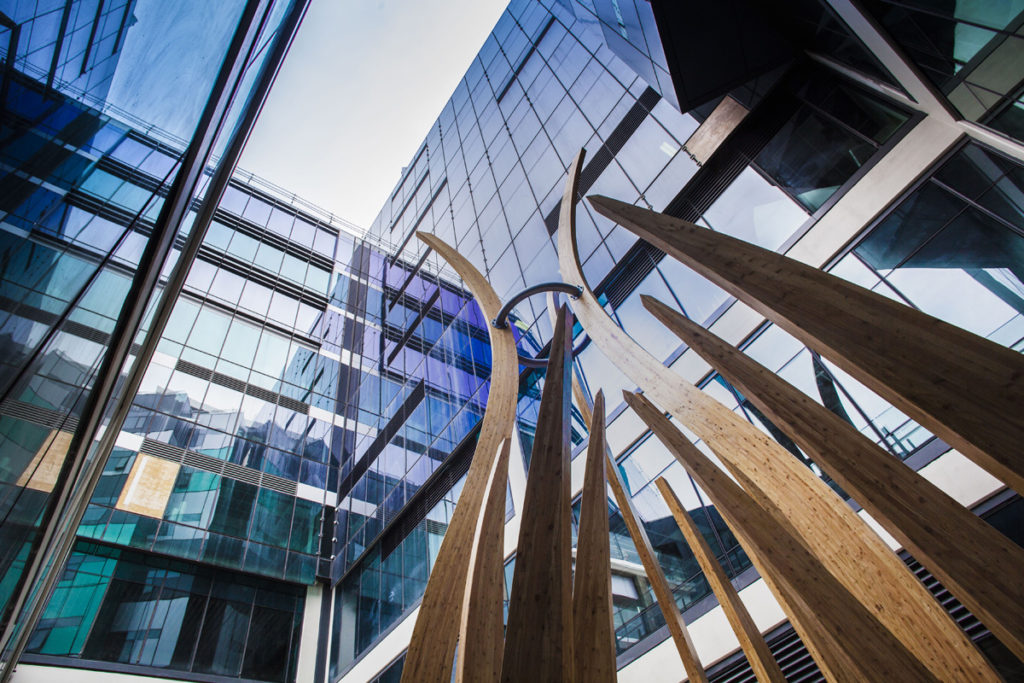
Artwork at the new Royal Adelaide Hospital.
The hospital is also equipped to respond to major disasters and will play a significant role in the state’s post-disaster management strategies.
The Emergency Department at the new hospital will have capacity to respond to chemical spills, natural disasters and infectious outbreaks.
The hospital has also been built to withstand an earthquake, and has an independent water and electricity supply allowing it to operate in “island mode” for at least 48 hours in the event that these public utilities fail.
“This is a world-class facility and I think we will start seeing a lot of people coming to Adelaide specifically to see what we’ve done there,” Girardi said.
The Adelaide BioMed City health precinct also includes the South Australian Health and Medical Research Institute, University of Adelaide Health & Medical Sciences Building and University of South Australia’s Centre for Cancer Biology.
It is set to become one of the largest health and life sciences clusters in the southern hemisphere.
Jump to next article



